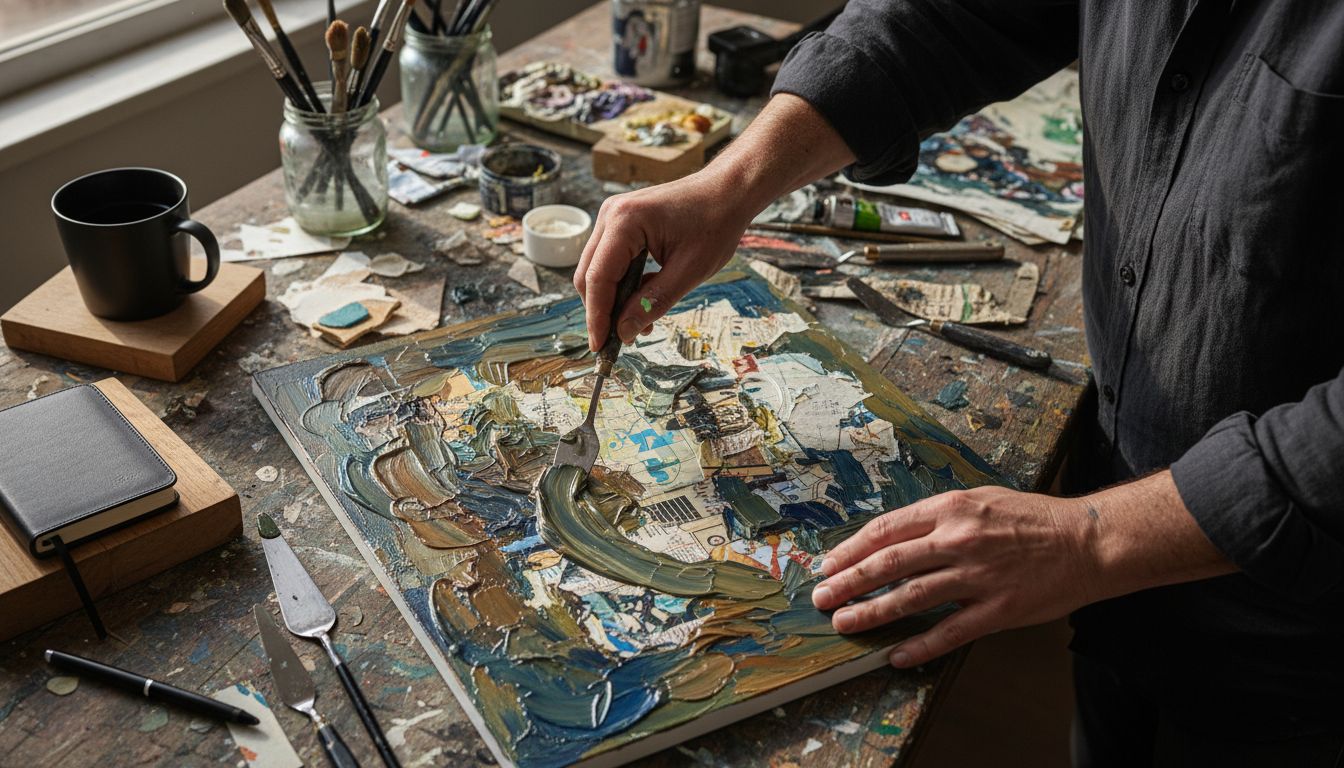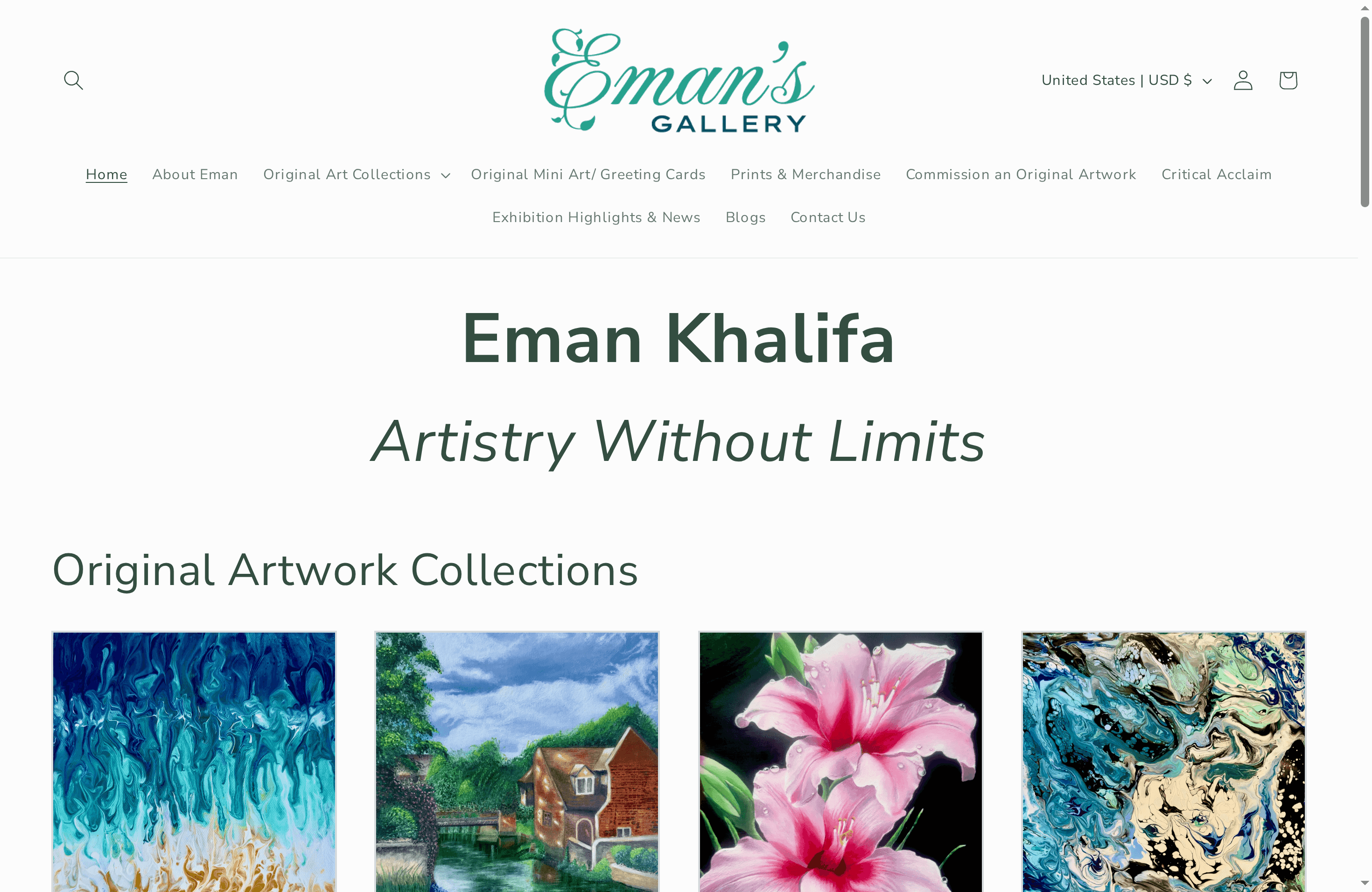
Textured Artwork Explained: Styles, Techniques, and Uses
Over 80 percent of people say textured artwork draws their attention more quickly than flat art. This is no surprise since texture invites you to look closer and even imagine what a surface might feel like. Artists use a wide range of creative techniques and materials to make their work stand out visually and emotionally. Whether you want to understand these methods or learn how texture affects space and mood, this guide gives you a closer look at the appeal and impact of textured art.
Table of Contents
- Defining Textured Artwork And Core Principles
- Popular Styles And Key Techniques Explained
- Materials Used In Creating Textured Art
- Role Of Texture In Interior Design
- Buying, Displaying, And Caring For Textured Art
Key Takeaways
| Point | Details |
|---|---|
| Engagement of Sensory Perception | Textured artwork enhances visual interest by engaging multiple senses through actual and implied textures. |
| Technique Versatility | Artists utilize a range of techniques, such as impasto and stippling, to create rich, multidimensional works that evoke emotions. |
| Interior Design Impact | Texture in interior design adds depth and dimension, significantly influencing the atmosphere and emotional connection within spaces. |
| Maintenance and Display | Proper care and strategic display of textured art enhance its longevity and visual impact, ensuring engaging experiences for viewers. |
Defining Textured Artwork and Core Principles
Textured artwork represents a dynamic visual experience that goes beyond traditional two-dimensional representations. According to ccad, texture in art refers to the surface quality that can be felt or perceived visually, encompassing both actual texture (which is physically tangible) and implied texture (suggested through visual techniques).
The core principles of textured artwork revolve around engaging multiple sensory perceptions. Artists strategically manipulate surface qualities to create depth, complexity, and visual interest. As welcomehomevetsofnj explains, texture conveys tactile characteristics through sophisticated mark-making techniques that enhance surface richness and realism.
Key characteristics of textured artwork include:

- Multisensory engagement
- Visual depth and complexity
- Exploration of surface qualities
- Invitation to perceive beyond visual boundaries
Professional artists leverage various techniques to create texture, such as impasto painting, layering materials, using specialized brushwork, and incorporating mixed media. These approaches transform flat surfaces into dynamic landscapes that invite viewers to experience art through visual and implied tactile sensations. Texture becomes more than a visual element it becomes a narrative device that communicates emotion, complexity, and artistic intention.

Popular Styles and Key Techniques Explained
Textured artwork encompasses a fascinating range of techniques that transform visual surfaces into dynamic sensory experiences. Stippling, a meticulous approach highlighted by arts, involves creating images through carefully arranged small dots or circles. Artists using this technique manipulate pigment with precision, building complex visual landscapes through strategic dot placement that suggests forms, shapes, and intricate areas of contrast.
Another compelling technique emerges from traditional Japanese painting practices. According to en, tarashikomi represents a sophisticated method where artists apply subsequent paint layers before previous layers completely dry, generating remarkable dripping effects. This technique allows extraordinary depth and nuance, particularly when depicting delicate elements like water ripples or intricate flower petals.
Key textured artwork techniques include:
- Impasto (thick paint application)
- Relief painting
- Collage integration
- Mixed media layering
- Experimental surface manipulation
Professional artists often combine multiple techniques to create rich, multidimensional artwork. These approaches transform flat canvases into immersive experiences, inviting viewers to explore textures that transcend traditional visual boundaries. By experimenting with different mark-making methods, materials, and application strategies, artists can communicate complex emotions and narratives through surface interactions and sensory engagement.
Here’s a comparison of popular textured artwork techniques and their distinctive effects:
| Technique | Key Materials | Distinctive Effects |
|---|---|---|
| Impasto | Oil paints Acrylic paints |
Thick, raised surfaces Rich depth |
| Stippling | Ink Fine pens |
Subtle texture Visual complexity |
| Tarashikomi | Water-based paints | Dripping effects Soft layers |
| Collage Integration | Mixed papers Found objects |
Multilayered look 3D textures |
| Art Needlework | Silk threads Fabric |
Embroidered detail Rich tactility |
| Chigiri-e | Handmade paper | Torn edges Delicate relief |
Materials Used in Creating Textured Art
Textured artwork thrives on the creative use of diverse materials that transform artistic vision into tactile experiences. Paper crafting stands out as a remarkable technique, with en highlighting the Japanese art of chigiri-e, where handmade paper is meticulously torn to create intricate images that resemble delicate watercolor paintings. The inherent texture and strength of specialized papers become a fundamental element in crafting visually rich artworks.
Beyond paper, textile techniques offer extraordinary texture possibilities. According to en, art needlework emerges as a sophisticated method of surface embroidery, utilizing silk threads and innovative stitching techniques to create nuanced, textured designs. Unlike traditional counted-thread methods, this approach emphasizes freehand surface manipulation that adds depth and complexity to artistic expressions.
Key materials for textured artwork include:
- Natural and synthetic fabrics
- Specialized art papers
- Acrylic and oil paints
- Clay and sculptural mediums
- Mixed media elements
- Organic materials like sand, wood, and found objects
Professional artists continually push boundaries by experimenting with unconventional materials. From textured canvases and specialized papers to three-dimensional elements like fabric, clay, and found objects, the potential for creating rich, multisensory artwork is limitless. These materials become more than mere tools they are active participants in the artistic narrative, transforming flat surfaces into dynamic, touchable experiences that engage viewers beyond traditional visual perception.
Role of Texture in Interior Design
Texture plays a transformative role in interior design, elevating spaces from merely functional to emotionally compelling. According to spirecreativity, textured art adds depth and dimension to interior spaces, creating visual interest and tactile engagement that makes rooms more dynamic and inviting. The strategic placement of textured artwork can dramatically alter the psychological perception of a space, influencing mood and sensory experience.
ccad emphasizes that in three-dimensional works, texture introduces a tactile quality that creates immersive environments. Interior designers leverage this principle by incorporating varied textures that engage multiple sensory experiences, transforming walls, furniture, and decorative elements into interactive canvases that tell visual stories.
Key strategies for incorporating texture in interior design include:
- Mixing smooth and rough surfaces
- Using layered textile elements
- Incorporating sculptural wall art
- Combining different material weights
- Creating visual contrast through textural diversity
Professional designers understand that texture is more than a visual element it’s a powerful tool for creating emotional connections within a space. By thoughtfully selecting textured artworks, fabrics, and decorative pieces, they can craft environments that feel alive, dynamic, and deeply personal. The interplay of light, shadow, and tactile surfaces transforms ordinary rooms into extraordinary experiences that resonate with inhabitants on a profound, sensory level.
Buying, Displaying, and Caring for Textured Art
Selecting the perfect textured artwork requires a nuanced understanding of artistic techniques and personal aesthetic preferences. arts suggests that understanding various painting techniques like stippling and gestural painting can significantly aid in choosing pieces that harmonize with your space’s ambiance. The key is to look beyond mere visual appeal and consider how the artwork’s texture interacts with light, shadow, and surrounding design elements.
When displaying textured art, strategic placement becomes crucial. Consider factors like natural light exposure, wall material, and room composition. Pieces with pronounced three-dimensional qualities might benefit from dedicated lighting that accentuates their depth and intricate surface details. For delicate textured works, avoid direct sunlight and high-humidity areas that could compromise the artwork’s integrity.
Critical considerations for textured art acquisition and preservation:
- Use archival-quality framing
- Install specialized art lighting
- Maintain consistent room temperature
- Clean with soft, dry microfiber cloths
- Avoid touching artwork surfaces directly
- Rotate displayed pieces to prevent uneven aging
Professional art collectors recommend treating textured artworks as living elements within your space. Regular, gentle maintenance and thoughtful display can transform these pieces from mere decorative objects into dynamic focal points that evolve and engage with their environment. For those seeking inspiration on elevating their art display, check out our 7 Inspiring Art Display Ideas to Elevate Your Home Decor guide, which offers expert insights into showcasing unique artworks effectively.
Discover the Unique Depth of Textured Artwork in Your Space
Are you inspired by the rich textural details and multisensory experience of textured artwork but uncertain how to bring that dynamic energy into your home or wardrobe? Many art lovers face the challenge of finding authentic pieces that capture the essence of texture through impasto, collage integration, or even stitched fabric surfaces. These techniques add emotional depth and tactile richness that ordinary prints cannot replicate.

Bring this captivating dimension into your life with original handart, wall art prints, and unique merchandise from Emans Gallery. Whether you want an expressive textured painting or a stylish tote bag featuring intricate art needlework designs, explore our curated collections that let you experience art beyond the surface. Visit Emans Gallery now to select artwork that transforms your surroundings and personal style with authentic textured artistry. Take the next step in elevating your space and wardrobe today.
Frequently Asked Questions
What is textured artwork?
Textured artwork refers to art that emphasizes the surface quality of materials, creating both visual and tactile experiences. It includes both actual textures that can be felt and implied textures that are visually suggested through artistic techniques.
What are some common techniques used in creating textured art?
Common techniques for creating textured artwork include impasto (thick paint application), stippling (using small dots), tarashikomi (layering wet paint), collage integration, and art needlework (surface embroidery).
How can texture enhance interior design?
Texture adds depth and dimension to interior spaces, creating visual interest and engaging multiple senses. Thoughtfully placed textured artwork can alter mood, create inviting environments, and interact with light and surroundings.
What materials are typically used in textured artwork?
Materials often used in textured artwork include natural and synthetic fabrics, specialized art papers, acrylic and oil paints, clay, mixed media elements, and organic materials like sand or wood.
Recommended
- Elemental Abstract Art by Eman Khalifa | Original Mixed Media Paintings for Modern Interiors – Eman’s Gallery
- American West Coast Colours and Work Ethic – Eman’s Gallery
- 7 Inspiring Art Display Ideas to Elevate Your Home Decor – Eman’s Gallery
- Morandi, O’Keeffe, Rothko & Other Masters Who Guide Me – Eman’s Gallery
